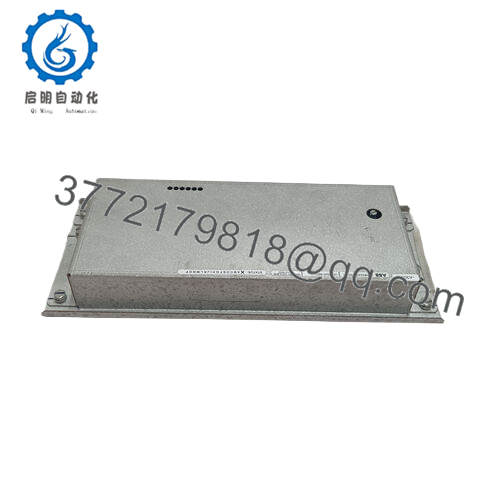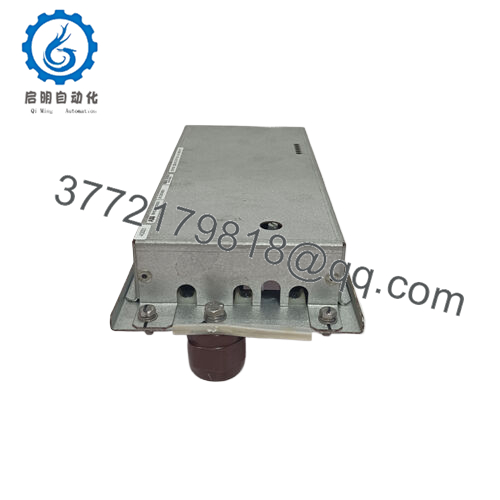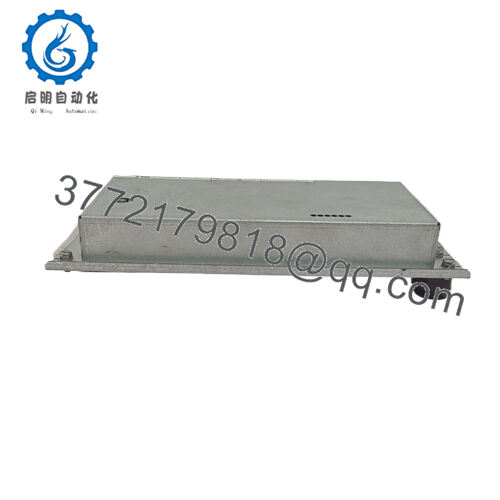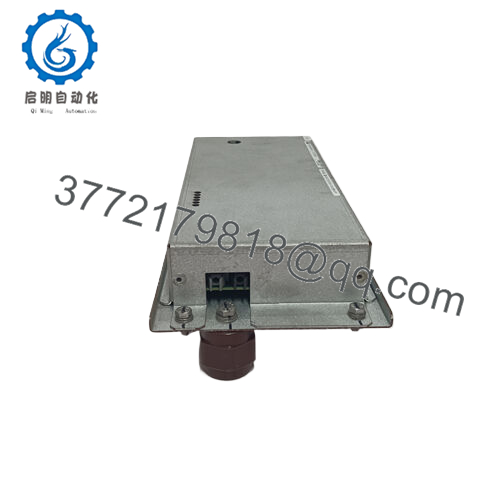Description
In the pulse-racing core of industrial automation, where power electronics demand split-second harmony between voltage commands and current feedbacks, engineers face a gauntlet of transients: harmonic surges distorting loop stability, thermal gradients warping sensor baselines, or I/O mismatches that cascade into thyristor misfires, unraveling the delicate balance of excitation or drive systems. Envision a wind turbine converter, where grid-side inverters juggle variable rotor speeds—any lag in analog signal capture could spike harmonics, triggering protective trips that idle blades and erode revenue in a market chasing every kWh. Or picture a steel mill’s DC arc furnace, steeped in arc flashes and electromagnetic fury, where imprecise current profiling feeds erratic electrode controls, bloating energy draws or melting crucibles unevenly amid the roar of continuous pours. These aren’t rare flares; they’re the inherent tempests in process control domains, where high reliability in analog I/O paths is the linchpin for algorithms that tame power flows without the overhang of false alarms or retrofit reckonings.
- ABB UDC920BE01 3BHE034863R0001
The ABB UDC920BE01 3BHE034863R0001 tackles these tempests as a universal analog expansion module in ABB’s AC 800PEC series, crafted to ingest and condition multi-range signals for high-speed power applications with unflinching poise. It aligns with the engineer’s drive for versatile signal fidelity, accommodating 0-10 V, ±10 V, or 4-20 mA inputs across eight channels, each tunable for voltage/current modes to mirror field transducers without custom attenuators. In fast-cycling setups like HVDC links or motor vector controls, the ABB UDC920BE01 3BHE034863R0001 emerges as pivotal, its galvanic isolation and low-noise preamps delivering sampled data at up to 10 kHz to the backplane, fueling PEC controllers for transient suppression that prevents overcurrents. By supporting multiplexed diagnostics for channel health, it trims the fog of troubleshooting in EMI-saturated bays, ensuring I/O signals in process control serve as sentinels, not sirens, for the precision your grid ties and yield curves require.
What carves the ABB UDC920BE01 3BHE034863R0001 a quiet contender in industrial automation is its adaptive spine—it’s the expander that bends to your blueprint, with configurable gain stages that scale from microamp shunts to 100 V peaks, letting you layer expansions without bus bottlenecks. For squads bridging legacy exciters to digital overlays, it dissolves the drag of signal silos, hot-plugging into CEX backplanes to sync with Ethernet/IP or PROFIBUS without firmware fusses. In the end, it nurtures process control that’s not merely sampled but sagacious, quelling the noise that nibbles at efficiency and upholding the high reliability your uptime oaths and audit trails exalt.
The ABB UDC920BE01 3BHE034863R0001 resides in the signal vanguard of your AC 800PEC hierarchy, docking into modular backplanes to harvest analog vignettes from shunts, PTs, or Hall effectors, where per-channel ADCs—16-bit resolution—digitize voltages or currents through selectable front-ends, multiplexing them onto the RS422 CEX bus for CPU-bound fusion at cycle rates down to 100 μs. It flourishes in ABB’s power electronics chassis, like those piloting UNITROL exciters, where conditioned samples cascade to FPGA cores for vector calcs or harmonic filters, outputting via D/A companions for gate pulses. In a drive cabinet, it mounts flush with PM controllers, its screw terminals or pluggable TU units fanning field wires, while embedded filters—anti-aliasing at Nyquist—quarantine spikes before propagation to SCADA historians.
Its choreography with kin is fluid: tether to a PPD113 base, and it’s auto-ganging channels for differential reads, with status relays pulsing overvolt faults to HMIs for triage. Diagnostics delve via ABB’s PCM600, surfacing metrics like offset drifts or crosstalk via loopback tests, and its redundancy schema—duplex mounting—mirrors streams to dodge single-channel voids. Perched in the analog-to-digital divide, the ABB UDC920BE01 3BHE034863R0001 thrives in edge pods, scaling from solo inverter ties to arrayed farms in 800xA webs, its protocol palette easing grafts onto Modbus TCP for third-party realms. For transitional power plants mingling PEC with legacy analogs, it pares conversion clutter, so you refine flux models over mending measurement mazes.
| Specification | Details |
|---|---|
| Model Number | UDC920BE01 3BHE034863R0001 |
| Brand | ABB |
| Type | Universal Analog Expansion Module |
| Input Voltage | 24 V DC |
| Operating Temp Range | -20°C to +60°C |
| Mounting Style | Backplane |
| Dimensions | 160 x 100 x 50 mm |
| Weight | 0.8 kg |
| Interface/Bus | CEX Bus (RS422) |
| Compliance | CE, RoHS, IEC 61508 (SIL 3) |
| Supported Protocols | Modbus TCP, PROFIBUS DP, Ethernet/IP |
| Typical Power Draw | 6 W |
Bringing the ABB UDC920BE01 3BHE034863R0001 aboard forges a reliability rampart tailored to the surge of power chores, where its isolated barriers and thermal tracking lock in sample sanctity amid arc bursts or convective curls, begetting performance consistency that steadies waveforms and nips the ripple that ravages rotors. In converter bays crackling with thyristor symphonies, this means tuners who trust their traces, unmarred by the crosstalk that clouds lesser lanes—directly paring the event logs your MTBF boasts burnish without the shroud of suspect spans.
The orchestration unfolds with finesse, lightening engineering overhead by scripting modes once in Control Builder for fleet flashes; provision eight channels for current clamps, and they’re profiling in a power-on pass, while multiplexed health pings distill faults to firmware flags, not field forays. Engineered for the marathon of megawatt vigils, the ABB UDC920BE01 3BHE034863R0001 tempers maintenance through runtime audits that trend gain drifts, elongating calibrations from shiftly scrubs to semestral scans and rerouting ranks to algorithm arcs. In the broader braid, it builds an automation bastion that broadens with your power playbook, where stacking digital adjuncts atop analog arcs amplifies anomaly acuity sans foundational flubs, anchoring long-term performance to fiscal fluxes and scalability surges.
In renewable inverters, the ABB UDC920BE01 3BHE034863R0001 conditions DC-link voltages for MPPT loops, sampling at 5 kHz to counter shade-induced swings—its noise rejection ensures grid-compliant sines, upholding critical system uptime in process control crucibles where curtailments cost kilowatt fortunes. Marine propulsion pods summon it for thrust vector feedbacks, its wide-range inputs mirroring propeller torques amid saltwater static; here, high reliability thwarts corrosion creeps, enabling seamless maneuvers that meet voyage velocities without voltage voids.
HVDC terminals cap its compass, multiplexing line currents in bipole configs where fast transients test every tick—the module’s isolation quells coupling glitches, integrating into DCS for oversight that sustains continuous uptime amid the high-voltage hymn of process control environments that demand delta-free dispatches.
UDC921BE01 3BHE034864R0001 – Enhanced variant with 16 channels for denser analog arrays in large-scale drives.
PPD113B03 3BHE023784R2330 – Base processor companion for core PEC algorithm hosting.
XVC768AE101 3BHE009014R0001 – Digital I/O expander for hybrid signal fusion in control loops.
PPD539A102 3BHE039770R0102 – Redundancy module add-on for duplex analog paths in safety nets.
PCD235B102 3BHE032025R0102 – FPGA-accelerated board for high-sample-rate extensions.
UDC910BE01 3BHE034862R0001 – Compact predecessor for legacy AC 800M analog tie-ins.
GFD124A101 3BHE046835R0101 – Gate feedback interface for thyristor monitoring pairings.
When staging the ABB UDC920BE01 3BHE034863R0001 for backplane berth, first fingerprint channel impedances with a LCR meter—mismatches over 1% breed bleed, so spec against ABB’s pin charts and buffer if bridging wet-dry zones. Assay enclosure thermals too; its horizontal heat fins crave 20mm lateral vents in stacked slots, especially if ambient nudges 55°C—mesh with your chiller curves to nix derates. Firmware fellowship is focal: pluck the PEC-tuned vintage from ABB’s archive, harmonize to your PM kernel, and loop a sine sim on a shadow shelf to vet multiplexer moxie pre-plug.
In the vigor vein, vigilance veers visionary over visceral. Bimensual metric mines via service port can unearth offset ousters, queuing a zero-cross zap before baselines buckle. Semiannually, unseat for terminal trims—dab dielectric against dust in arc-adjacent aeries, and torque to 0.5 Nm where vibes vibrate. Crown yearly with a gain gauntlet: infuse test ramps, retune if ripple rouses past 0.05%, and bunker buffers for bias beacons like creeping CMRR. These pulses pull from the module’s marrow to prolong your industrial automation’s mettle, framing fidelity as a flux, not a fray.





 WhatsApp: +86 16626708626
WhatsApp: +86 16626708626 Email:
Email:  Phone: +86 16626708626
Phone: +86 16626708626



